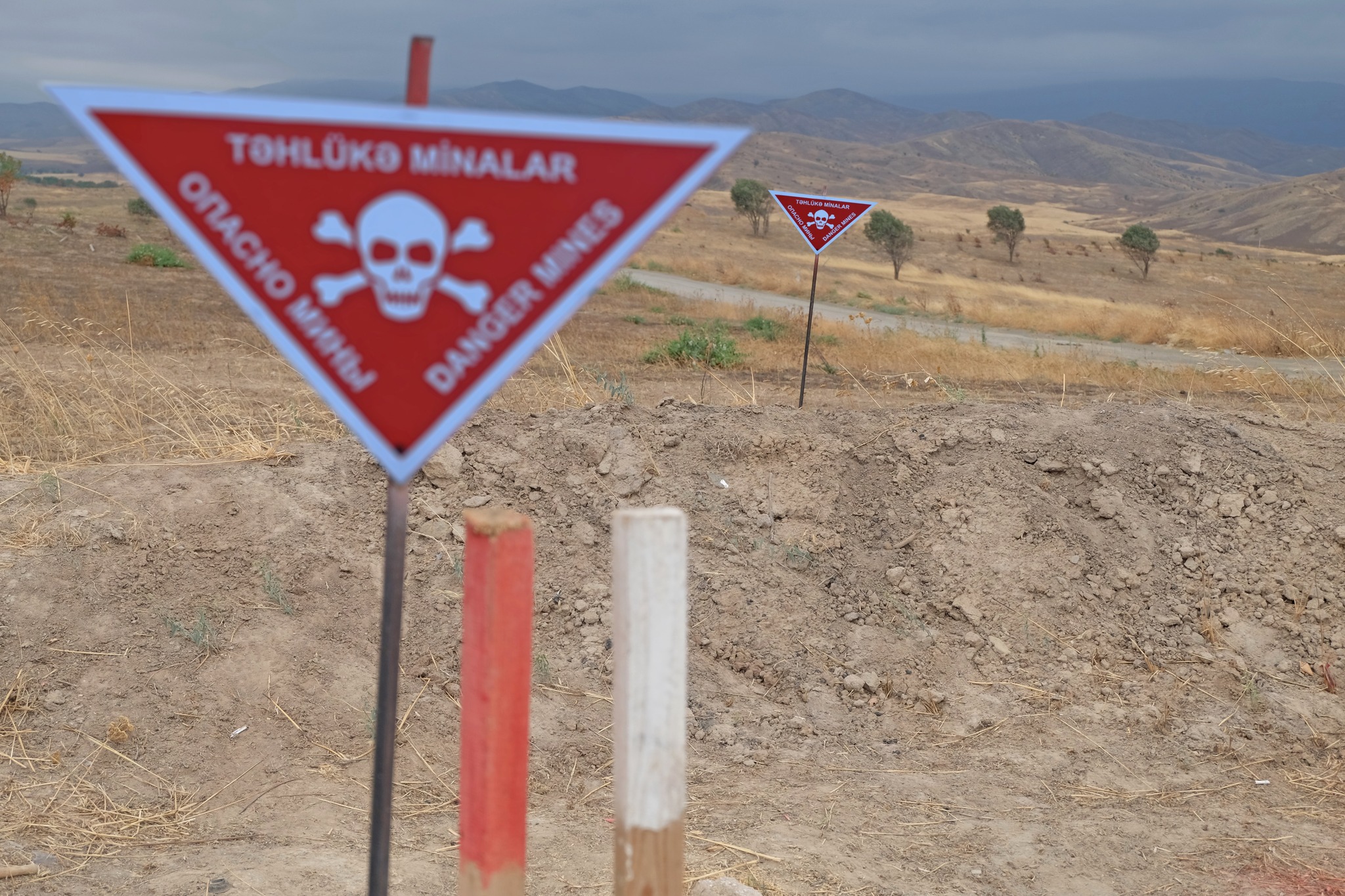Armenia provided Azerbaijan with eight maps allegedly detailing the minefields in the territories liberated from occupation, specifically the locations of the mined areas encompassing the Murovdagh range in the Kalbajar district.
However, as with previously submitted maps, the information provided in these latest maps remains imprecise, unreliable, and incomplete, according to the Azerbaijan National Agency for Mine Action (ANAMA).
According to normative technical regulations, minefield maps should include reference points, types, numbers, spacing of the mines, and methods of laying and concealing them.
“Analysis and processing of the maps have revealed inconsistencies with actual minefields, with reference point coordinates found to be incorrect and unusable. Overall, the maps presented by Armenia cover only a portion of the areas along the former line of contact. Information on mined areas in the territories of Khojavand, Tartar, and Goranboy districts through which the former line of contact passed, as well as areas mined by Armenian military units during their withdrawal in November 2020, has yet to be provided,” ANAMA said in a statement on Monday.
The accuracy of previously provided information on minefields laid by Armenia in the Aghdam, Fuzuli, Jabrayil, and Zangilan districts of Azerbaijan was only 25%. The mine action in the liberated territories of Azerbaijan launched by ANAMA shortly after the 2020 war revealed the heavy contamination of the residential areas, agricultural lands, riverbanks, forests, and cemeteries with landmines and unexploded ordnance.
Since the Second Karabakh War in 2020, as many as 345 Azerbaijanis, including civilians and servicemen, have been victim to mine blasts that caused 65 deaths and 280 injuries. In the latest mine accident in the Khojavand district on February 10, a beekeeper was injured and his three fingers amputated.
In 2023, in joint efforts by ANAMA, the Defense Ministry, the Emergencies Ministry, and the State Border Service of Azerbaijan, around 53,082 hectares (128,700 acres) of territory in the liberated lands were cleared of mines. The number of neutralized anti-personnel mines, anti-tank mines, and unexploded ordnances were 3,495, 5,034, and 23,049, respectively.
The government of Azerbaijan estimates at least one million mines laid by Armenia during the years of occupation.
The Karabakh (Garabagh) and East Zangazur regions of Azerbaijan have been extensively mined since the 1990s by Armenian armed forces. Following the Soviet Union’s dissolution in 1991, Armenia launched a full-scale military assault against Azerbaijan. The bloody war lasted until a ceasefire was reached in 1994 and saw Armenia occupying 20 percent of Azerbaijan’s internationally recognized territories. Over 30,000 Azerbaijanis were killed, nearly 4,000 went missing, and one million were expelled from those lands in a brutal ethnic cleansing campaign conducted by Armenia.
On September 27, 2020, the longstanding conflict reignited when Armenia’s forces, stationed illegally in occupied Azerbaijani lands, attacked military positions and civilian settlements of Azerbaijan. In a 44-day counterattack, Azerbaijani forces liberated more than 300 settlements, including the cities of Jabrayil, Fuzuli, Zangilan, Gubadli, and Shusha, from Armenian occupation. The war concluded on November 10, 2020, with a tripartite statement signed by Armenia, Azerbaijan, and Russia. Under this agreement, Armenia returned the occupied Aghdam, Kalbajar, and Lachin districts to Azerbaijan.
Since the cessation of hostilities, the Azerbaijani government has been actively engaged in demining operations in the liberated territories to facilitate the return of internally displaced people to their homes. Despite significant efforts, these operations encountered challenges due to Armenia’s refusal to provide maps indicating the locations of landmines.
In November 2022, the Azerbaijani Defense Ministry discovered a substantial minefield in the Lachin district, laid by illegal Armenian armed detachments after the 2020 war. The ministry confirmed the discovery and defused the 350 PMN-E anti-personnel mines, manufactured in Armenia.
The persistent threat of landmines poses the significant obstacle to the repopulation of the liberated Azerbaijani lands. According to Azerbaijani government data, international experts estimate that it will take nearly 30 years and $25 billion to address demining-related issues.







 Azerbaijan and Armenia started the process of demarcation of their border on Tuesday, with the installation of the first border markers based on ge...
Azerbaijan and Armenia started the process of demarcation of their border on Tuesday, with the installation of the first border markers based on ge...
 President Aliyev emphasized the critical role of the North-South Transport Corridor in fostering transport cooperation between Azerbaijan and Russi...
President Aliyev emphasized the critical role of the North-South Transport Corridor in fostering transport cooperation between Azerbaijan and Russi...
 Iran and Pakistan have signed eight cooperation documents in various fields, and agreed to strengthen ties to fight terrorism in the region.
Iran and Pakistan have signed eight cooperation documents in various fields, and agreed to strengthen ties to fight terrorism in the region.
 As the conflict between Ukraine and Russia escalates, the strategic importance of Kharkiv, Ukraine's second-largest city, has come sharply into focus.
As the conflict between Ukraine and Russia escalates, the strategic importance of Kharkiv, Ukraine's second-largest city, has come sharply into focus.
 Iranian President Ebrahim Raisi expressed Tehran’s readiness to participate in significant development projects in Sri Lanka during the inauguratio...
Iranian President Ebrahim Raisi expressed Tehran’s readiness to participate in significant development projects in Sri Lanka during the inauguratio...



